Text
A bearded dragons are native to habitats that have a significant amount (15%) of naturally occurring calcium in their substrate. Geophagy, which is the behavior of intentionally eating substrate, is a natural behavior used to fill their dietary need for calcium.
Calcium sand is made of the exact same calcium that is used in calcium supplements for reptiles, however the amount of calcium to sand ratio depends on the brand. Some contain up to 99% calcium.
Calcium sand is safe, natural, and potentially beneficial when used as a mix with other safe substrates. It is not safe or natural to use on it's own.
When used as a mixture, it is no more dangerous than sand on it's own. Sand on it's own can also indirectly cause impaction, but this is usually caused by husbandry issues and not the sand itself.
I've never seen any issues with abrasion, moisture retention shouldn't even be an issue with the temperatures associated with a proper set up, and if you can clean a litter box then you can clean sand of any kind.

science misinformation
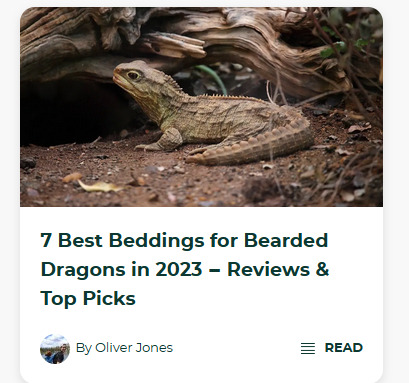
if you click this article it says that calcium sand is the best bedding
you know, for your pet
tuatara
i mean your pet bearded-dragon-definitely-a-lizard-not-tuatara
121 notes
·
View notes
Text
I'm writing a beginner's guide to reptile lighting thats 20 pages long and over 7,000 words. It's currently being peer reviewed by Dr. Francis Baines and Roman Muryn, which is why I haven't posted it yet. ❤
reblog this with what you’re proud of accomplishing this year in the tags! (this does NOT mean work-related!!! this can be personal growth!! relationship growth!!! a hobby you started!!! mental health challenges you faced and are working on!!)
12K notes
·
View notes
Note
Ok but I want to add something very important to this- while many reptile can't distinguish the color red, this DOES NOT MEAN that they can't see the effects of red bulbs, especially at night.
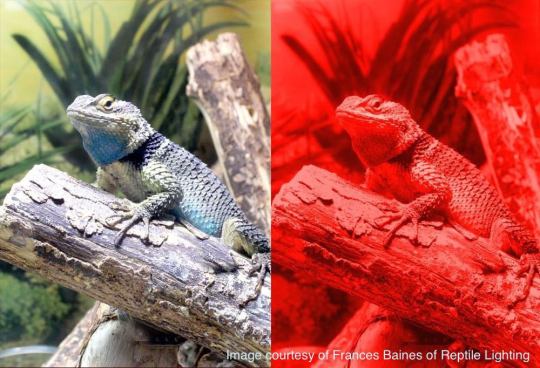
At night, a red bulb will be significantly brighter than moonlight, disrupting their sense of day and night. All bulbs, regardless of color, should not be used at night if they produce visible light.
During the day, red bulbs will give everything in the environment a tint, disrupting the reptile's ability to see, hunt, and explore effectively. Reptiles may also change their appearance to communicate with each other, and the res light will disrupt that too.
Whether they can see the color or not, red bulbs make everything look very similar.
For daytime heat, a regular, white light heat bulbs should be used, and for night (if necessary), a heat source that does not produce visible light should be used.
Wait... Snakes can see color???
I for some reason assumed they couldn't... how do they see? what do they see?
Yes! Snakes are dichromatic; they have blue and green cones and can see colors in those ranges. They can also easily distinguish white and black from other colors - a lot of pet snakes get excited to see white things because they associate the color with the white feeder rodents most people use! Blue is the color I often use to target-train my snakes because it seems to stand out very clearly to them.
Even though they can see color, many snakes don't have very good vision. They rely primarily on their sense of smell - a lot of shapes probably look very blurry to them!
Snake color vision probably looks similar to the left image below.
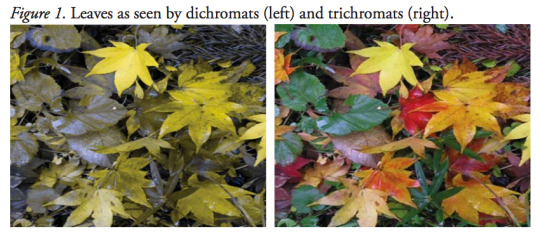
616 notes
·
View notes
Note
Hi, I'm that heat mat person!
Just a few things to add-
It is actually possible to use an on off or pulse proportional thermostat with a basking bulb IF the bulb is able to reach your basking spot temp at full power. If you set the temp on an on/off thermostat to higher than what the bulb can actually achieve, so it will stay at full power but have the safety shut off with the thermostat. But that only works if you dont have to dim the bulb. Otherwise you should use a dimming thermostat.
As far as night time heat-
If your house stays above 70⁰F or 21⁰C, a night time heat source may not be necessary. And in fact, regular temperature drops gives their metabolism a break and may increase their life expectancy. If you do need one, make sure to use a heat source that does not produce light, including red or blue light.
As far as deep heat projectors during the day (and I'm going to make a more in depth post about this soon), I do not recommend them as a replacement for an incandescent or halogen bulb. The amount of infared A they produce is so minimal (often as low as 3%), and the lack of visible light makes them significantly less natural than basking bulbs. They're fine for night time, but I do not recommend using them on their own during the day.
hey! I was just wondering if you have any good suggestions for plants to add to a tank! my bp has absolutely wrecked every plant ive added (he sits on them until the stems break and then they die) so I was wondering if you knew of any... more /tolerant/ plants that you may have had success with.
(also @ the person who added the reblog about heat mats I would love to hear suggestions about better heating since I'm also doing a major upgrade soon)
hope you and the noodles are all well!!
Hello!
Okay so unfortunately we can't help much on the plant side of things because our ball pythons aren't bioactive, which is entirely because they will crush all the plants lmao. I've seen people have had quite good luck with pothos, dracaena and spider plants but we've still been quite anxious to attempt it ourselves 😭 (if a follower has recommendations for plants please let us know since I'm sure lots of people would benefit!)
For heating however, I can help there!
So the best heating you can use is an incandescent basking bulb, you'd probably want a 75-100W bulb. You'll need this on a dimming thermostat, digital dimmers are usually more accurate but they can also be pricey, so a manual one is fine too but make sure to check your temps more to get them right if you go with that option. On/off and pulse thermostats will make the bulb break sooner as well as turn on and off which isn't great for your snake and also annoying for yourself to look at too 😆 Basking bulbs provide UVA as well by producing light so this is an extra benefit for your snake, but because of the light these would have to be turned off at night to provide a day/night cycle. If the room is above 18°C (around 64.5°F) then a basking bulb may not be ideal unless you can have a second heat source at night.. which brings us to the next thing!
Alternatively the second best option would be a deep heat projector. These don't provide visible light so they're able to stay on 24/7 and ideally should also be on a dimming thermostat. If you have a digital one a lot of them come with day and night settings which allows your snake to also experience a temperature drop at night which is more natural for them - or you can change it manually at night if you don't have a digital day/night stat. To provide some UVA you can also use any other light emitting bulb alongside, so an LED would work for this.
And of course, while it's not heat related, I'd 100% invest in a UVB bulb if you haven't got one already. They do need to be replaced every 1-2 years but they're so beneficial. Many people try to say that ball pythons are nocturnal so they don't need UVB and especially will say not to give albino animals UVB, but we see Second Breakfast the albino ball python openly basking under her UVB during the day on a regular basis! Arcadia T5 Shadedweller is our usual but there are other brands like Reptisun and Reptile Systems that have good options too! Sorry if you didn't need the UVB bit but I figured even if it isn't needed for you then it could help someone reading ❤️
All of us over here are doing great! We've got exciting upgrade plans coming up so things are going to be fun around here! Hope you and your noodle are also good!
15 notes
·
View notes
Text
I'm super happy that they're getting upgrades, that's so wonderful!
If you dont mind, I want to expand on the topic of heat mats. Heat mats have a very difficult time warming up reptiles- it takes a long time for the heat they produce to penetrate into the skin and warm up reptiles' bodies so that they can digest their food.
Often times you'll see reptiles sitting on their heat mat for very long periods of time. This, as well as other reasons, will result in the reptile being inactive.
But I also want to mention that many reptiles will burrow to cool down and escape the heat. And if you put your Under the Tank Heater under the substrate, burrowing will make them warmer instead of cooler. So they either have to stop performing a natural behavior or risk overheating.
On top of that, if you have substrate over a betta mat, the mat has to take even more time to warm the substrate before it can create a proper temperature gradient in the overall enclosure, so the reptile will spend even less time exploring or doing any activity besides warming up.
Tldr, don't use heat mats. They are so many better options.
It's official, Taro and Wraith are getting big girl enclosures next week!
Their current enclosures will then be cleaned out for Sundae and Firefly the leopard geckos. We're also going to be working on upgrading all the others in tubs right now (Gingersnap, Breadstick and Yuzu). Mambo Number 5 and Dandelion will also be getting upgrades. Hoping within a month we'll have no more tubs being used for reptiles.
While tubs are okay we prefer to provide an enclosure that feels less exposed and also being able to provide overhead heat since things like heat mats don't provide proper heating and that can be a digestion issue. So we're really excited to get everyone into their forever homes!
18 notes
·
View notes
Text
Just wanted to add that if, for whatever reason, you dont have a thermostat, check your temps (ideally with a temperature gun, they're very accurate at measuring surface temperature).
Things you can do to lower your temps if lowering your heat source isnt cutting it-
Make sure you have a large water dish. You should always have a water dish available for every reptile, including arid species like bearded dragons. Give them water.
Deep substrate. In the wild, reptiles will burrow into substrate to escape the heat from the sun. This is another reason why heat mats are not a great option.
More airflow and ventilation. If you dont have a screen top, you can use computer fans to add airflow.
Quick PSA: check your snake thermostats!
If you're in the US, you probably know there's a serious heatwave affecting most of the country right now. It's a good time to double-check your thermostats are in good order and are looking good (and if you don't have one, get one ((here's a good cheap thermostat))). You want to be sure that your heat sources are going to stay regulated in this weather.
Even if your themostats are looking good, it's a good idea to check up on your snakes every now and again. I've just had to turn most of my snakes' heat sources off because they're just staying too hot even with the AC running full-blast.
For your snakes' safety and your peace of mind, now's a good time to make sure everything's looking good and you're staying prepared in case your snakes start getting too hot! Remember: it's always better to just turn your snakes' heat source off instead of risk them overheating.
Here's a post I made recently that outlines what to look for in overheating snakes. Make sure to keep an eye on your pets!
263 notes
·
View notes
Text
My Reptile Lighting paper is almost finished! A bit more peer review and editing and I'll be sharing it here! Get excited!
It's pretty long, but it covers as many topics as I could think of (and ones that I didn't), and it has images and citations to other peer reviewed studies and videos.
I tried to make it both scientifically accurate and understandable for beginners. I'm still waiting on feedback from beginners, so I'll be making updates in that department too.
Look forward to it!
3 notes
·
View notes
Text
Everything in this post is excellent. There is only one point I want to argue, and that is that "humidity shouldn't be over 60%".
Do I have recent scientific evidence to back this up? You bet your booty I do!
Below I've linked an excellent video (which has some great photos in it) on examining leopard geckos in their natural habitat and using that information to determine how we should care for them in captivity. In this video, the narrator links to two studies (also linked below).
The first study is from 2009, where a herpetologist from Pakistan studied leopard geckos in their natural habitat. He found that leopard geckos preferred to live in naturally occurring hides, where the humidity could be up to 33% higher than the surrounding area. Their natural habitat also had monsoon periods, where the entire environment reached between 70-80% humidity, as well as humid seasons. Leopard geckos were shown to be most active during the humid seasons compared to other times of the year.
The second study is from 2019, researchers in Nepal found leopard geckos living in areas with lots of trees and plants, even some that had made a home in a tree that was 5 FEET/1.5 METERS up in the air! Not exactly about humidity, but the pictures are certainly not the arid landscape we might picture when we think of a leo's natural habitat.
Thirdly, the director of Field and Captive Herpetology, traveled to India in 2018 and 2019 and found that wild leopard geckos were living in lush habitats with lots of plants.
So should be be giving our leopard geckos a constant 80% humidity? Certainly not. If we want to mimic their natural habitat, we should be providing a range of humidity, both within the enclosure and throughout the year! This is another reason why providing as large of an enclosure as you can is so important.
Additionally, it isn't necessarily the humidity itself that can cause respiratory issues- its the lack of ventilation, as well as other factors that can be detrimental to a gecko's health. Another thing we can do to both mimic their natural habitat, as well as maximize their health in captivity is by mimicking sunlight. An effective heat source that will properly warm their body so that they can digest their food but also encourage them to be active. Halogen and incandescent heat bulbs produce large amounts of infrared A, which mimics the heat the sun produces, and the infrared A wavelengths penetrate into the skin much more quickly and deeply than deep heat projectors, ceramic heat emitters, and heat mats.
UVB provides many benefits to leopard geckos as well. The most well known is synthesizing vitamin D3 and allowing them to metabolize calcium, preventing Metabolic Bone Disease, but it also stregthens the immune system too, both decreasing the chances of infection and healing the body more quicky when injured. There's many more benefits to UVB, but this post is getting long enough as it is.
One more comment about humidity- a well hydrated leopard gecko improves the functionality of their digestive system, which means a significantly less likelihood of impaction!
Video: https://youtu.be/L2moaEo_P00
2009 study: https://www.researchgate.net/publication/304381063_leopard_gecko_Eublepharis_macularious_from_Pakistan
2019 study: https://www.researchgate.net/publication/331979702_First_Records_of_the_Common_Leopard_Gecko_Eublepharis_macularius_Blyth_1854_Eublepharidae_in_Nepal
Captive and Field Herpetology: https://www.captiveandfieldherpetology.com/
Let's talk a bit about leopard gecko enclosures!
The absolute minimum size for any adult leopard gecko is 36x18x18 inches (3x1.5x1.5 feet). You can typically put juveniles immediately into an enclosure this size - as long as there is enough decor and hides for them to feel secure then they'll be fine
Where possible, bigger enclosures are great! Leopard geckos absolutely love having extra space to explore, and even height too. Leopard geckos are thought as terrestrial animals, and while that is true they do love to climb and giving a leopard gecko background of any kind is an excellent way to encourage exercise as well as give them extra hiding spots if you do a custom built background
Outdated information says that leopard geckos can be housed permanently in a 24 inch (2 foot) enclosure but this isn't true!
As well as the space to exercise, a bigger enclosure allows for a better heat gradient which is very important for them to thermo regulate their body temperature. They need a warm basking spot (which can be improved with something like slate to absorb heat that they can bask on or lay on at night) but their cool end doesn't need the same heat and it can be dangerous for them to not be able to escape the heat of their basking area
Wooden vivariums are typically best for leopard geckos since they hold heat very well, but since these aren't really available in some countries something like a glass Exo Terra would be alright as long as you make sure to check on their temperatures. PVC could potentially work but they do hold humidity very well which could be a problem for your leopard gecko(s) since their humidity shouldn't be over 60% for long (35-60% is the safe zone). Enclosures should be front opening, not something top opening like a repurposed fish tank. Wooden viv con is that typically the substrate can't be that deep, so a substrate guard of some kind may help there, a glass enclosure is better suited for deeper substrate. Leopard geckos should have a few inches of substrate in order to display their natural behaviours since they do burrow in the wild.
This isn't a super thorough post, but I hope it's helpful for some people! Feel free to add on to it, ask questions (on the post or in an ask) or whatever else.
If anyone wants to argue against any of what I'm saying then please provide sources that are recent science to back it up otherwise I won't consider responding in any way.
43 notes
·
View notes
Text
Really over when people call their reptile "spicy" when its stressed out and fearful enough to lunge or bite.
They're not angry, they're afraid, and you should work to address that.
8 notes
·
View notes
Text
Look who willingly chose to come out and be handled!

Indigo was originally very defensive when I first got him, but I chose to do what's called Choice Based Handling to earn his trust. I let him tell me when he was comfortable, and didn't move forward with getting him used to me until he showed me that he wasnt stressed. It takes longer, but the results are worth it. A stable foundation of trust.
Even after a long period of very little interaction, Indigo still feels comfortable with me, as long as I respect his limits.
You do not have to force your reptile to feel comfortable with handling, and often times it can backfire. You can get an animal that has learned helplessness, where it feels powerless and has no control over what's happening to it and simply accepts that, or you can get an animal that is very stressed and defensive.
Listen to your animals body language, and show them respect. They in turn, will learn that they can trust you and feel safe with you.
60 notes
·
View notes
Text
Hang in there!
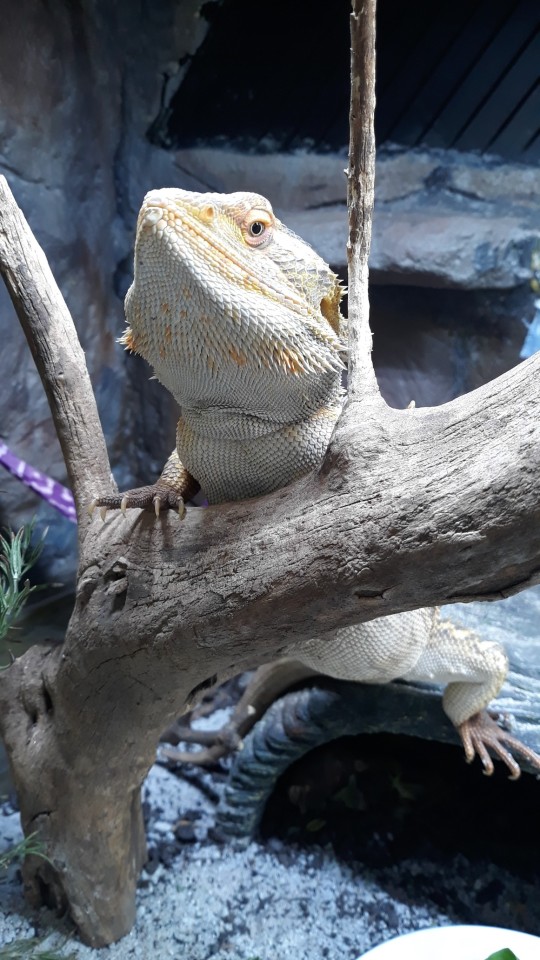
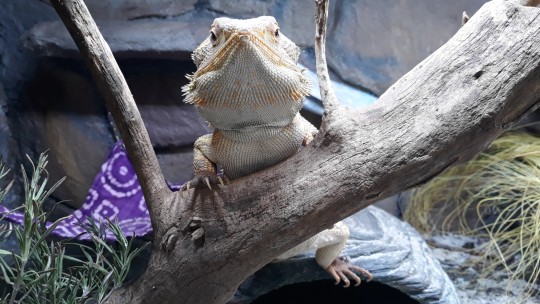

We're still on hiatus because baby, but Indigo is still here and he woke up from brumation not too long ago.
40 notes
·
View notes
Text
So the seeds I planted did indeed sprout! And then Indigo ate almost all of them. So I decided to cut my losses and just buy established plants. And I got a great deal on 3 of them from my local plant nursery. I still need to add more sand to make everything level, but here is how his home looks now! Hopefully they last. 😅🤞
They are rosemary, carex/sedge grass, and aloe.
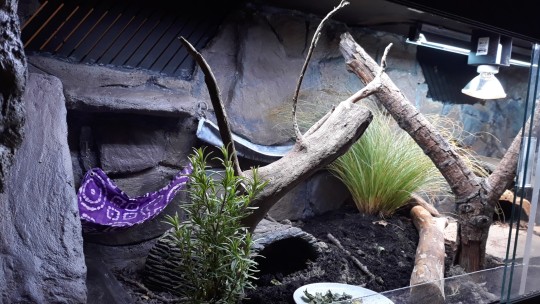


4 notes
·
View notes
Text
Long time no dragon!
Sorry about that. I have almost no free time. We're still here though!

A brief update:
I planted things! It's actually the same seed mix I grow for his garden, plus thyme and arugula. The clover is already sprouting!
I have very bright LEDs across the length of his enclosure, and I've been lightly watering it daily.
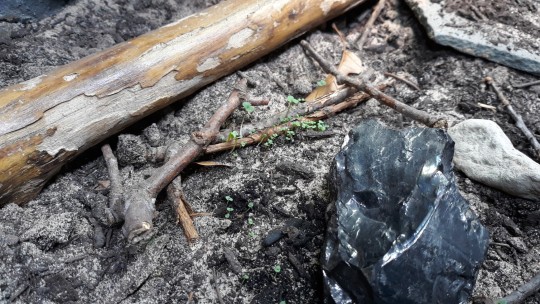
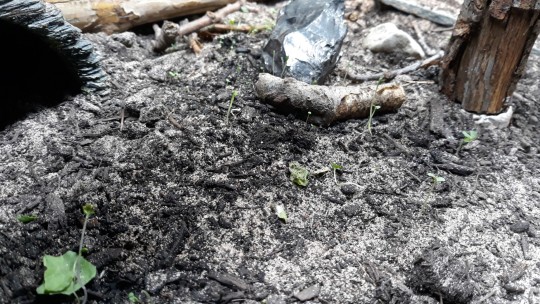
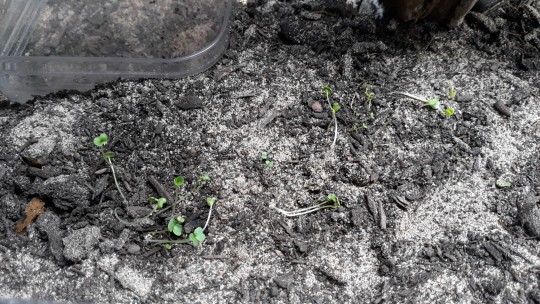
I'm hoping they do well!
25 notes
·
View notes
Text
Ok, one thing I don't understand.
Bearded dragons live in calcisol regions- this means that the substrate they live on is very high in calcium. This map is a soil composition map of Australia overlaid with wild beard dragon sightings (the orange and red squares).

And here is a post by TheBeardieVet, a veterinarian that studies wild bearded dragons, discussing the substrate of their natural habitat (specifically the grain size, not the chemical composition). Note that their natural habitat is 95.9% sand.

Bearded dragons, in the wild, perform a natural behavior called geophagy where they ingest substrate to meet nutritional needs.
If you're a member of How Not to Slay the Dragon (Pogona Vitticeps) on Facebook, you know that substrate has more benefits than risks if the dragon is healthy, the parameters (heat, humidity, uvb, and diet) are correct, and the substrate is appropriate. In fact, the risk of impaction is very slim.
People give leopard geckos a dish of calcium for them to eat as they like.
But the moment someone suggests using calcium sand for bearded dragons, everyone loses their mind and says "IMPACTION! HYPERVITAMINOSIS!"
Why is a dish of calcium for leos, who are found in foresty areas as well as arid habitats (source), perfectly safe and reasonable, and we can rely on them to self regulate how much pure calcium they ingest, but calcium sand for bearded dragons is the devil?
25 notes
·
View notes
Text
Today is a very special day! It's Indigo's 1 year hatchday! As a special treat, Indigo gets garden grown clover, strawberries, and blueberries. Happy hatchday! I hope to have many more with you. :)
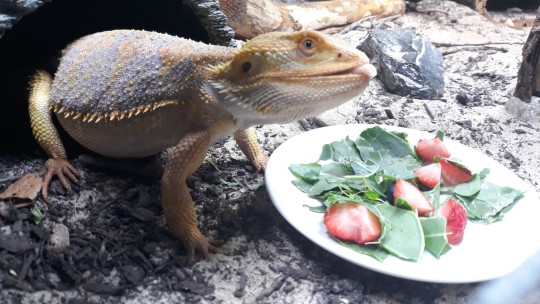
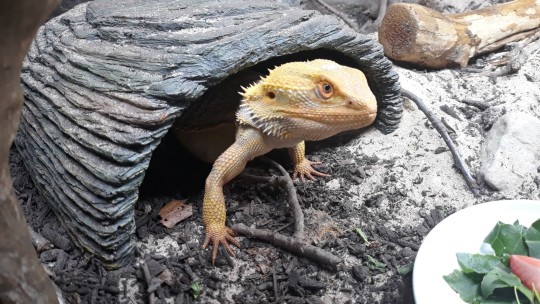
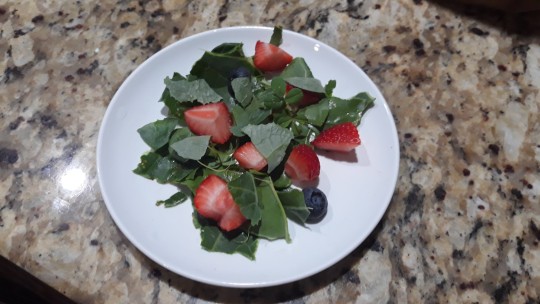
158 notes
·
View notes
Text
Today is Indigo's hatch day! As a special treat, he got some blueberries with his salad.
#i had emergency surgery yesterday#sorry for the lack of uploads#my IUD escaped my uterus and was floating around my body :(
2 notes
·
View notes
Text

Reblog with your animal. It’s toucans for me
115K notes
·
View notes